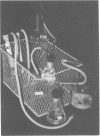Abstract
A strain of Naegleria gruberi, isolated from a Vero cell culture and designated TS-1, was axenically cultivated in monolayer and mass aerating suspension culture. Cultural conditions for constant growth parameters and high-exponential cell densities were defined. Serum or other supplemented fractions were found essential in both Trypticase-yeast extract-glucose (TYG) and Casitone (CAS)-based media. Monolayer cultures grown in the CAS medium required lower levels of serum to reach maximum stationary densities of amoebae than cultures grown in the TYG medium. Heat-killed (121 C, 10 min) whole cell and cell lysate bacterial fractions were capable of replacing the serum in both the TYG and CAS media. Heat-killed bacterial fractions provided the same levels of growth as attained with serum in TYG medium, whereas the bacterial lysate supported only minimal growth in the same medium. In the CAS medium, both bacterial fractions resulted in the same level of growth which was equal to that obtained in reduced serum content. Strain TS-1 was established in suspension culture with the CAS medium used in monolayer culture. The addition of sheep red blood cells (RBC) or RBC lysate greatly enhanced growth responses. Further modifications resulted in a final medium for suspension culture consisting of Casitone-yeast extract-glucose-vitamin base, supplemented with serum and RBC lysate. This medium supported growth with a mean generation time of 9 h at 30 C and a stationary phase yield of greater than 5 × 106 amoebae per ml.
Full text
PDF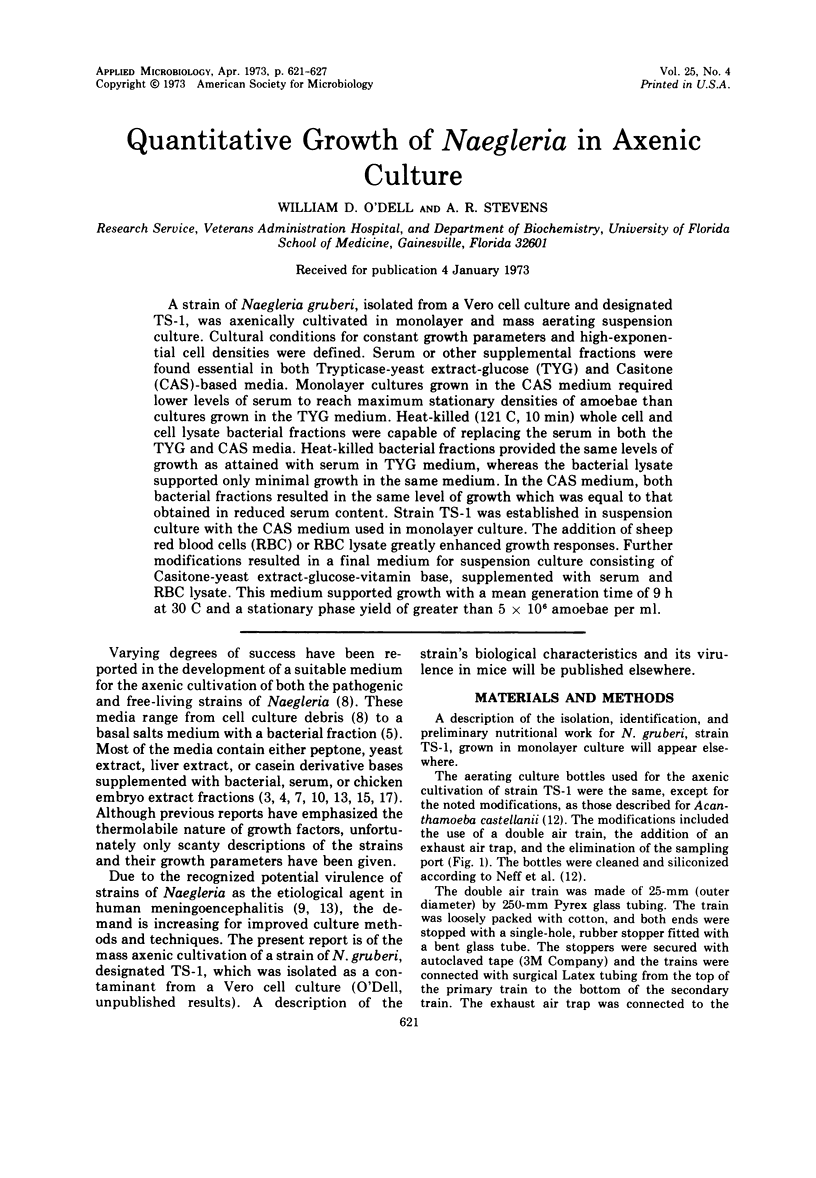
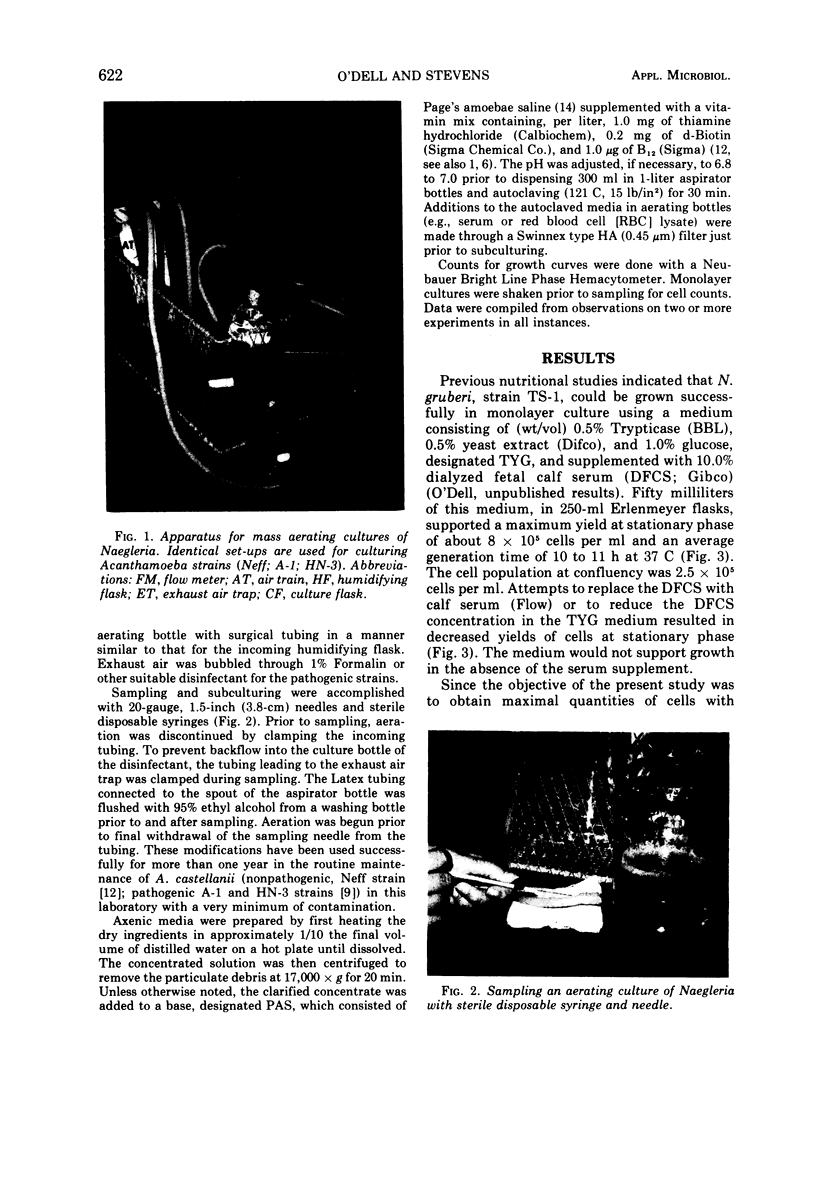
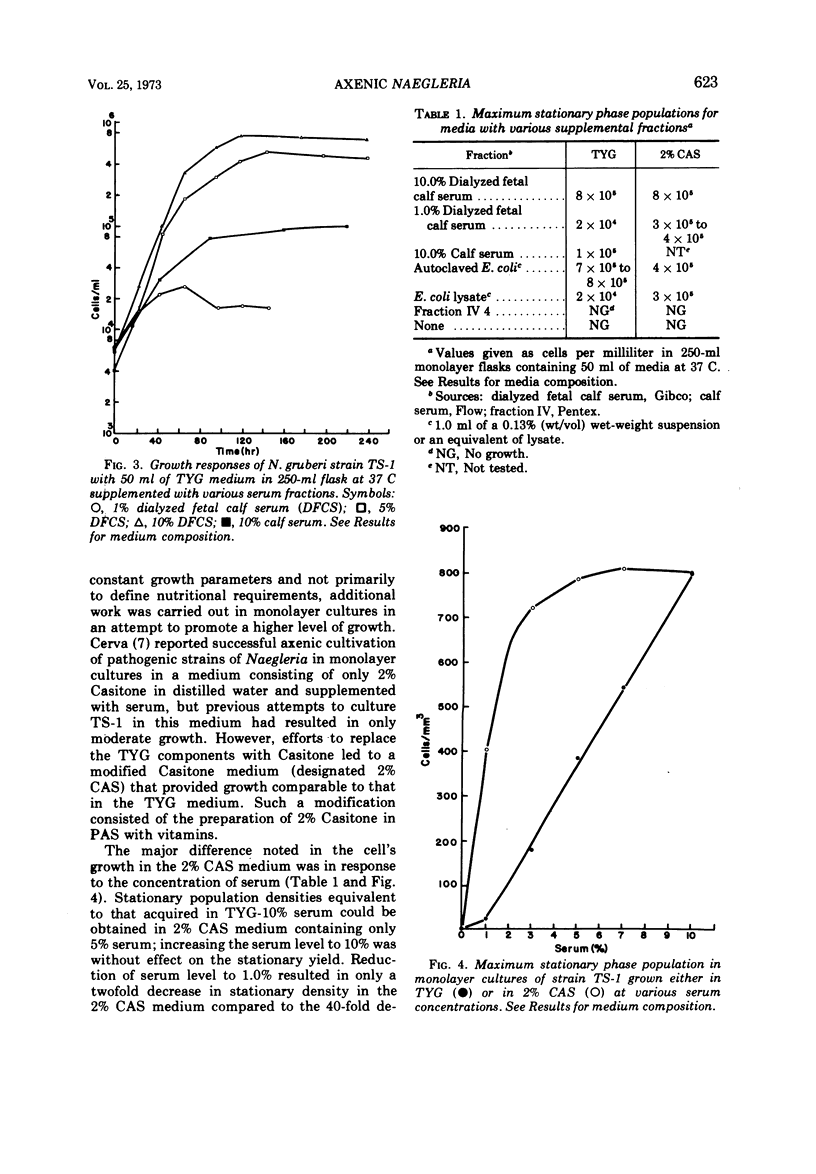
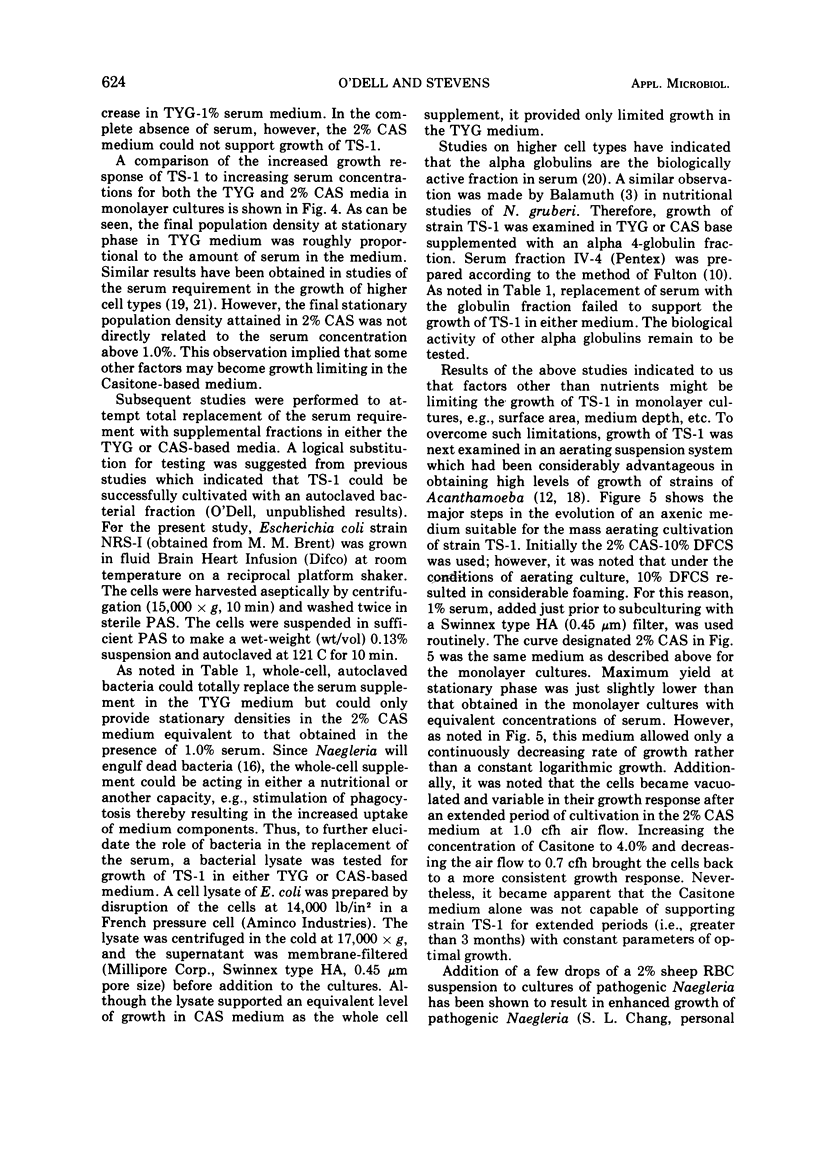
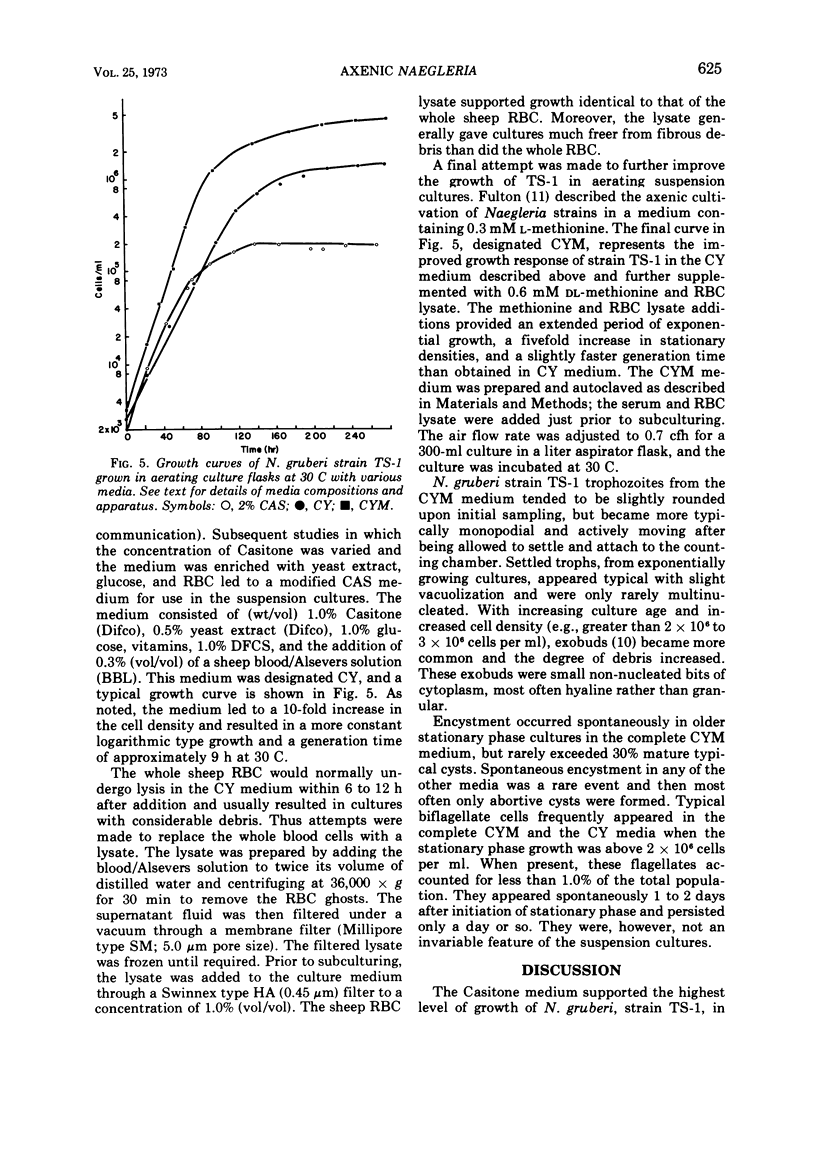
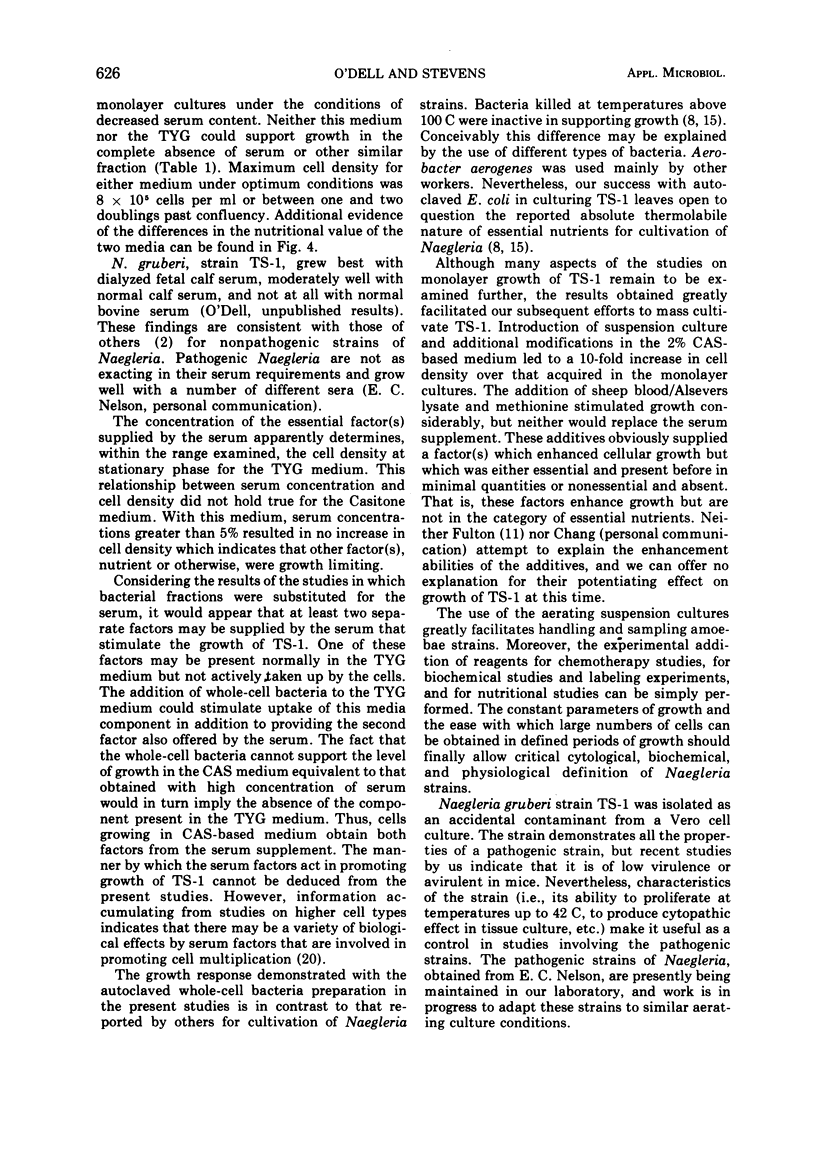
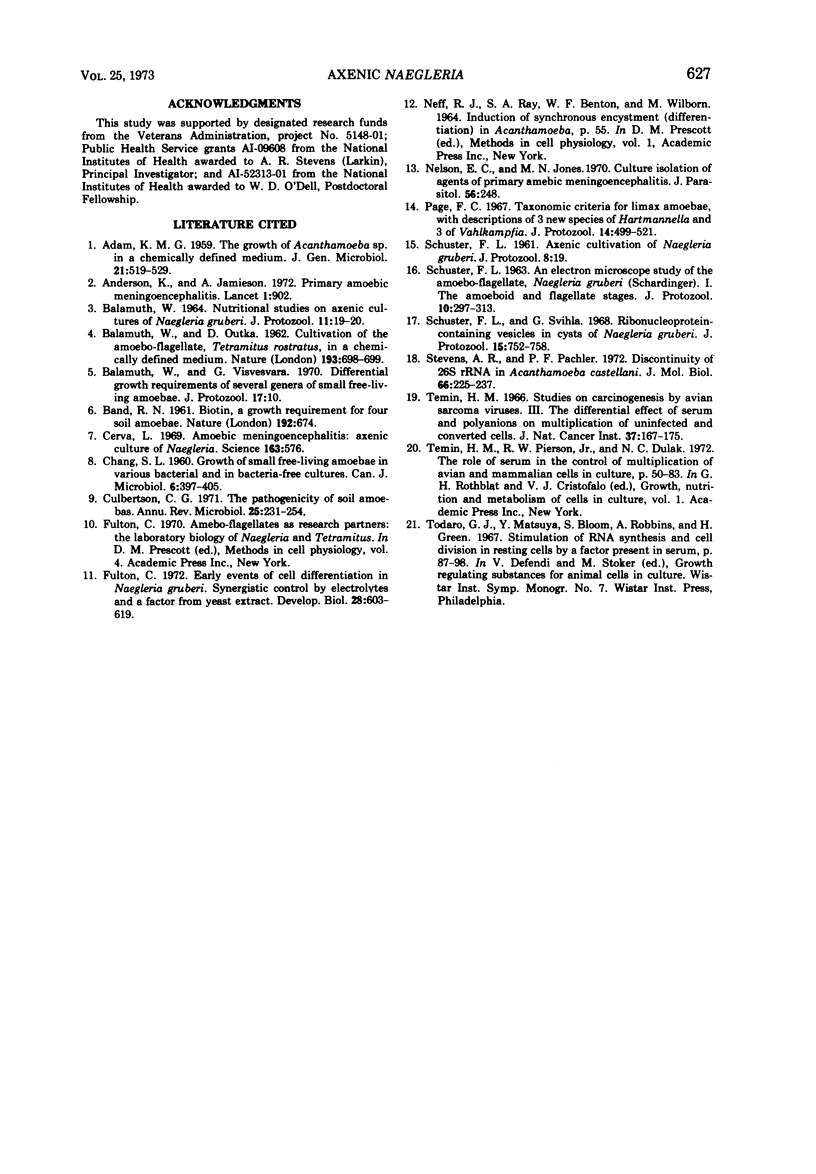
Images in this article
Selected References
These references are in PubMed. This may not be the complete list of references from this article.
- ADAM K. M. The growth of Acanthamoeba sp. in a chemically defined medium. J Gen Microbiol. 1959 Dec;21:519–529. doi: 10.1099/00221287-21-3-519. [DOI] [PubMed] [Google Scholar]
- Anderson K., Jamieson A. Primary amoebic meningoencephalitis. Lancet. 1972 Apr 22;1(7756):902–903. doi: 10.1016/s0140-6736(72)90772-6. [DOI] [PubMed] [Google Scholar]
- BALAMUTH W., OUTKA D. Cultivation of the amoeboflagellate, Tetramitus rostratus, in a chemically defined medium. Nature. 1962 Feb 17;193:698–699. doi: 10.1038/193698a0. [DOI] [PubMed] [Google Scholar]
- BAND R. N. Biotin, a growth requirement for four soil amoebae. Nature. 1961 Nov 18;192:674–674. doi: 10.1038/192674a0. [DOI] [PubMed] [Google Scholar]
- CHANG S. L. Growth of small free-living amoebae in various bacterial and in bacteria-free cultures. Can J Microbiol. 1960 Aug;6:397–405. doi: 10.1139/m60-045. [DOI] [PubMed] [Google Scholar]
- Cerva L. Amoebic meningoencephalitis: axenic culture of Naegleria. Science. 1969 Feb 7;163(3867):576–576. [PubMed] [Google Scholar]
- Culbertson C. G. The pathogenicity of soil amebas. Annu Rev Microbiol. 1971;25:231–254. doi: 10.1146/annurev.mi.25.100171.001311. [DOI] [PubMed] [Google Scholar]
- Fulton C. Early events of cell differentiation in Naegleria gruberi. Synergistic control by electrolytes and a factor from yeast extract. Dev Biol. 1972 Aug;28(4):603–619. doi: 10.1016/0012-1606(72)90006-1. [DOI] [PubMed] [Google Scholar]
- Pacheco G., Tulloch G. S. Microfilariae of Dirofilaria striata in a dog. J Parasitol. 1970 Apr;56(2):248–248. [PubMed] [Google Scholar]
- Page F. C. Taxonomic criteria for limax amoebae, with descriptions of 3 new species of Hartmannella and 3 of Vahlkampfia. J Protozool. 1967 Aug;14(3):499–521. doi: 10.1111/j.1550-7408.1967.tb02036.x. [DOI] [PubMed] [Google Scholar]
- Ruff M. D., McDougald L. R., Hansen M. F. Isolation of Histomonas meleagridis from embryonated eggs of Heterakis gallinarum. J Protozool. 1970 Feb;17(1):10–11. doi: 10.1111/j.1550-7408.1970.tb05152.x. [DOI] [PubMed] [Google Scholar]
- SCHUSTER F. AN ELECTRON MICROSCOPE STUDY OF THE AMOEBO-FLAGELLATE, NAEGLERIA GRUBERI (SCHARDINGER). I. THE AMOEBOID AND FLAGELLATE STAGES. J Protozool. 1963 Aug;10:297–313. doi: 10.1111/j.1550-7408.1963.tb01681.x. [DOI] [PubMed] [Google Scholar]
- Schuster F. L., Svihla G. Ribonucleoprotein-containing vesicles in cysts of Naegleria gruberi. J Protozool. 1968 Nov;15(4):752–758. doi: 10.1111/j.1550-7408.1968.tb02206.x. [DOI] [PubMed] [Google Scholar]
- Stevens A. R., Pachler P. F. Discontinuity of 26 s rRNA in Acanthamoeba castellani. J Mol Biol. 1972 May 14;66(2):225–237. doi: 10.1016/0022-2836(72)90475-5. [DOI] [PubMed] [Google Scholar]
- Temin H. M. Studies on carcinogenesis by avian sarcoma viruses. 3. The differential effect of serum and polyanions on multiplication of uninfected and converted cells. J Natl Cancer Inst. 1966 Aug;37(2):167–175. [PubMed] [Google Scholar]



